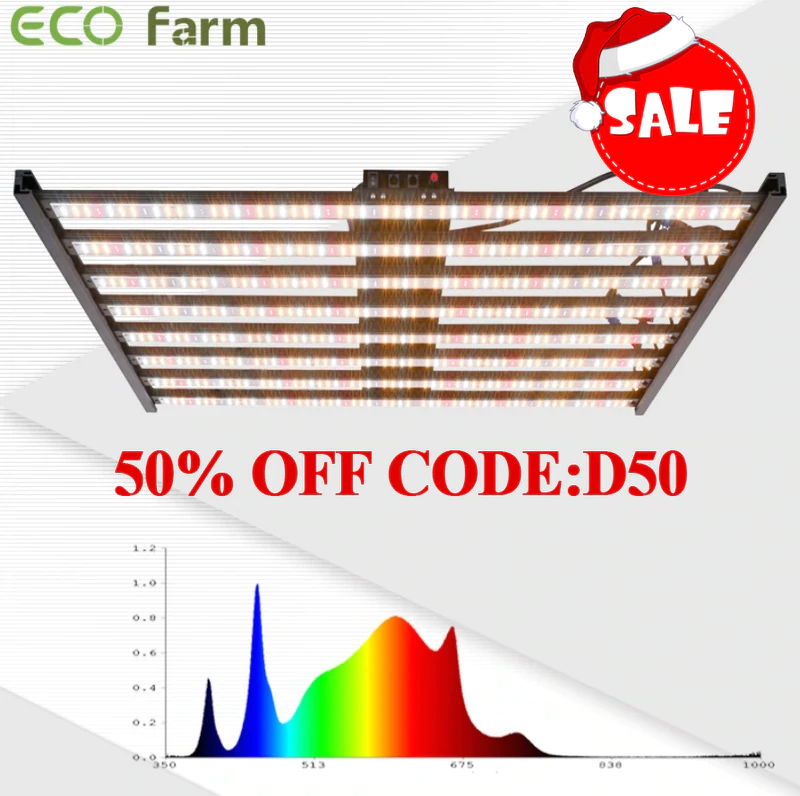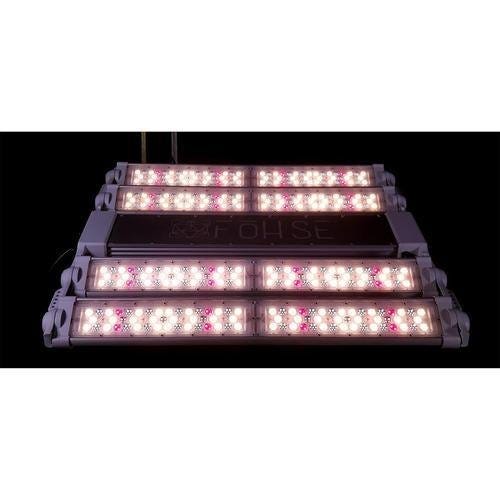- Home
- SHOP ECO FARM
-
TOP BRANDS
-
Grow Lights Brands
- Adjust-A-Wing
- Apollo Horticulture
- Bestva
- Black Dog LED
- California Lightworks
- ChilLED Grow Light
- Eco Farm
- HLG - Horticulture Lighting Group
- Kingled
- Kind LED
- Mars Hydro
- Morsen
- Neilo
- NextLight
- Phlizon
- PlatinumLed
- Roleadro
- Optic LED Grow Lights
- ViparSpectra
- Vivosun
- EYE Hortilux
- IPOWER
- NanoLux
- Phantom grow light
- Gavita grow lights
- Grower's Choice
- Lumatek
- Maxibright
- Yearld Pro
- ThinkGrow
- Crecer Lighting
- Green Sunshine Electric Sky
- fohse aries
- loriflux
- luxx
- fluence
- iluminar
- Lex
- LTC
- Rayonled
- FGI
- PHOTONTEK
- Grow Tents & Kits Brands
- Extraction & Harvest Brands
- Climate Control & Hydroponic Brands
-
Grow Lights Brands
- COMPANY INFO
- COOPERATE WITH US
- Blog
- Sign in
- Home
-
SHOP ECO FARM
- ECO Farm Grow Lights
- ECO Farm LED Grow Lights
- ECO Farm Quantum Board
- ECO Farm Samsung LED Grow Lights
- ECO Farm COB Grow Lights
- ECO Farm Commercial Lights
- ECO Farm Supplemental Grow Light
- ECO Farm Fluorescent grow lights
- ECO Farm HPS & MH Grow Lights
- ECO Farm CMH Grow Lights
- ECO Farm HID/CMH Bulbs & Ballasts
- ECO Farm Grow Tents & Kits
- ECO Farm 2x2ft Grow Kits
- ECO Farm 3x3ft Grow Kits
- ECO Farm 3.3x3.3ft Grow Kits
- ECO Farm 4x4ft Grow Kits
- ECO Farm 5x5ft Grow Kits
- ECO Farm Grow Tent - Standard Style
- ECO Farm Grow Tent - Extension & Roof & Lodge Style
- ECO Farm Extraction & Harvest
- ECO Farm Rosin Press Machine
- ECO Farm Dry & Wet Trimmers
- ECO Farm Oil Accessories
- ECO Farm Medicinal Plants Grinder
- ECO Farm Medicinal Plants Containers
- ECO Farm Medicinal Plants Dryer
- ECO Farm Refrigeration Dryer
- ECO Farm Climate Control & Other Accessories
- ECO Farm Inline Duct Fans
- ECO Farm Oscillating Fans
- ECO Farm Exhaust Fans
- ECO Farm Air Filter
- ECO Farm Duct Muffler
- ECO Farm Ventilation Kits
- ECO Farm Plant Humidifiers
- ECO Farm Plant Dehumidifiers
- ECO Farm Hydroponic Accessories
- ECO Farm Other Accessories
- ECO Farm Hydroponics Microscopes
-
TOP BRANDS
- Grow Lights Brands
- Adjust-A-Wing
- Apollo Horticulture
- Bestva
- Black Dog LED
- California Lightworks
- ChilLED Grow Light
- Eco Farm
- HLG - Horticulture Lighting Group
- Kingled
- Kind LED
- Mars Hydro
- Morsen
- Neilo
- NextLight
- Phlizon
- PlatinumLed
- Roleadro
- Optic LED Grow Lights
- ViparSpectra
- Vivosun
- EYE Hortilux
- IPOWER
- NanoLux
- Phantom grow light
- Gavita grow lights
- Grower's Choice
- Lumatek
- Maxibright
- Yearld Pro
- ThinkGrow
- Crecer Lighting
- Green Sunshine Electric Sky
- fohse aries
- loriflux
- luxx
- fluence
- iluminar
- Lex
- LTC
- Rayonled
- FGI
- PHOTONTEK
- Grow Tents & Kits Brands
- Apollo Horticulture
- Black Box
- CoolGrows
- Eco Farm
- GrowLab
- Gorilla Grow Tents
- Mars Hydro
- Quictent
- Secret Jardin
- Unit Farm
- TopoGrow
- VIVOSUN
- Topolite
-
COMPANY INFO
-
COOPERATE WITH US
- Blog
ECO Farm ECOD Samsung UV+ IR 640W Dimmable LED Grow Light VS Fohse ARIES 640W LED Grow Light
June 21, 2022
When growing plants, lighting is essential. The best possible lighting is the natural light produced by the sun. It has the perfect mix of UV rays that plants crave, and the closer you are the equator, the better those rays become.
Plants need plenty of light to produce quality plants and buds. On average a plant needs twelve hours of darkness each day to begin flowering. Generally speaking, the more light your plants receive, the better and stronger they grow, leading to higher yields.
What are the advantages and disadvantages of LED lights?
Pros
Compared to HID lights and other conventional options, LEDs are far more energy-efficient (up to 40% savings in bills), durable, and last longer too.
LEDs run very cool and produce a lot less heat than other options.
You can move your plants closer to LED lights as it produces less heat.
LEDs can be dimmed if you want and work on an instant on/off principle; they do not require any ‘warming up’.
Cons
LEDs may be more expensive upfront, although they do offer savings in the long run.
LEDs don’t produce any infrared energy, which means you need to keep your grow rooms warm, starting at ideally 25–27°C.
LEDs don’t dry up grow rooms like HPS lights. Therefore, growers have to fight increased humidity.
ECO Farm ECOD Samsung UV+ IR 640W Dimmable LED Grow Light

Features:
This ECO Farm LED grow light is the best choice for master growers to achieve high yields indoors. 640W of power makes this one of the highest-performance grow lights on the market. Full Spectrum, 3000K, 6500K, 660nm 730nm IR for broad coverage, like outdoor solar light. Industry-leading Samsung leds and Inventronics driver for over 100,000 hours of life. The auto-sensing driver allows you to run 120VAC, 240VAC, and 277VAC. Comes with a standard 110V wall plug. Far better than any traditional light bulb system. Older bulbs are short-lived, wasteful, noisy, and produce excess heat. Our LED lighting system runs at low cost, has a 100,000+ hour lifespan, is not just quiet but completely silent, and has a built-in dimmer knob.
Fohse ARIES 640W (100–277V) LED Grow Light

Features:
The Fohse LED grow light deploys an advantage you won’t find anywhere else — swiveling light bars to achieve maximum canopy penetration by cross illumination to neighboring grow plots. Unlike obsolete plasma burning grow lights the Aries has no ‘Infrared Spike’ in its spectrum, meaning drastically less heat radiating down on and damaging your canopy. Your grow environment isn’t the friendliest place for sensitive electronics. That’s why the Aries can withstand the intense conditions of your growth. It’s impervious to hitchhikers (dust, mites, aphids, spores). It can even withstand full submersion in 1 meter of water. Early generation LED lamps failed the industry due to low output + poor canopy penetration. The secret of Aries’ success starts with abundant PAR focused onto your canopy by polycarbonate focal lenses.
Factors To Consider When Buying Grow Lights For Indoor Growing
Grow lights are a crucial component of growing plants indoors. There are different types of lights for various purposes and capacities. Buying the wrong type of light can hurt the growth of your plants. You have to make the proper calculations first to get the right kind of lighting.
These are the things to keep in mind when looking for grow lights for your indoor garden.
Color Spectrum
Your plants will go through different growth stages, and each stage will require different types of lighting. For example, plants at their vegetative stage will need a blue light spectrum, while those at the flowering stage will need red spectrum lights.
Size of Grow Area and Plants
Lights should be properly distributed in your grow area so that your plants will get equal lighting. This is why the size of your grow area is crucial in knowing the number of plant grow lights you will need.
Along with this, you have to arrange your grow room so that each plant will get equal amounts of light and water and ventilation. You have to make sure that you maximize your space and light so they won’t go to waste.
Height
The height of your lights will affect the growth of your plants. If you keep your lights too close to your plants, you risk getting their leaves burned. If the lights are too high for the plants, your plants may get affected by their THC levels.
This is why part of your responsibilities as a grower is to shift your plants and prevent their leaves from burning regularly.
Light Schedule
Your plants will also need a certain number of hours in the dark. Most growers maintain their plants in complete darkness for around 4 to 6 hours every day. A slight mistake in your lighting schedule can affect the quality of your plants, so you have to be careful when adjusting your plants’ daily consumption of lights.
Heat
Grow lights, such as MH and HID, give off heat. This is important to note because extra heat can affect the texture and quality of your plants. You should adjust accordingly if you have humidity and temperature separately.
Conclusion
We hope you found this engaging and insightful — many factors come into play when it comes to growing your plant with LED grow lights. Luckily, the key principles have been outlined in this article, leaving you to look after your plant in a responsible manner!
Also in Indoor Grow LED Grow Light
HLG Greenhouse Pro HE HV 630W LED Grow Light VS Geeklight grow light 480W hydroponic led grow light
October 20, 2023
